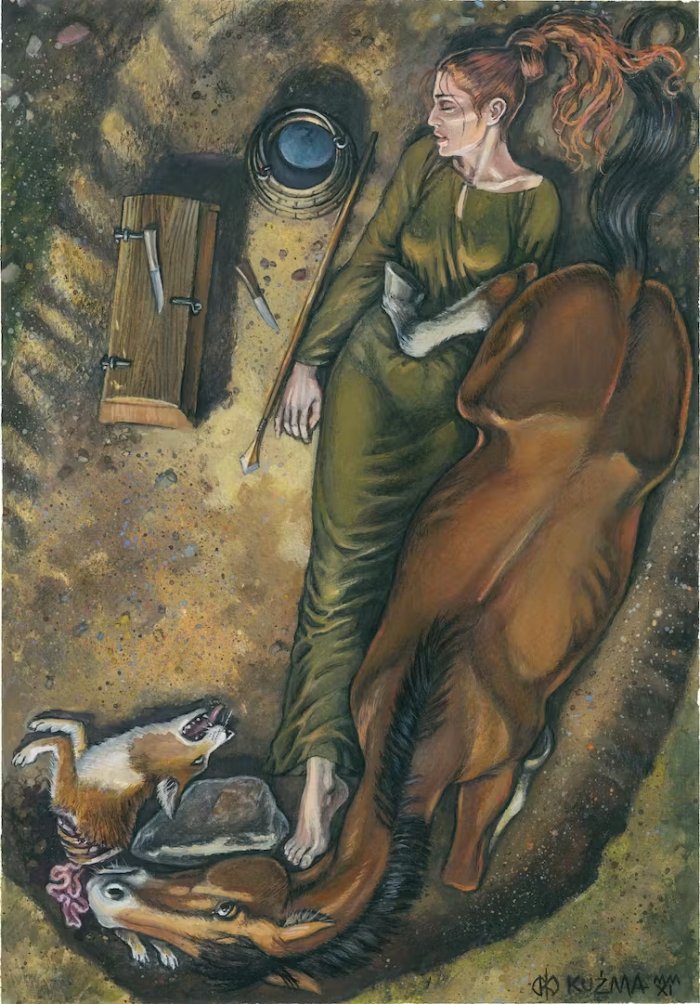Vikings Cared Deeply For Their Animal Companions – Shared Human And Horse Burials Reveal
AncientPages.com - Is your pet part of the family? That’s nothing new. Archeological evidence exists to suggest that the Vikings held their own animals in high – even intimate – regard, taking them with them on voyages. Earlier this year, scientific evidence found for the first time that – as early as the ninth century – Vikings brought horses, dogs and other animals with them across the North Sea.
Illustration of the graves by Mirosław Kuźma. Credit: Leszek Gardeła
The prevailing assumption had been that enterprising Viking armies had simply acquired horses (along with other items of plunder) in their raids on the British Isles. But these findings suggest that the depth of the relationships Viking-age people had with animals have been dramatically underrepresented.
But why? After all, the vast majority of people – Scandinavian or otherwise – living through the Viking Age relied on farming to survive. Why has it taken so long for researchers to realise that these humans and animals sustained deep, complex, emotional and mutually enriching relationships?
Past societies cared about humans, animals and things differently. Some humans could be owned, even viewed as objects and valued far less than some animals. In our research, we use both archaeology and texts to show that some horses in communities such as those of Viking Age Scandinavia and Iceland could be seen as “people” themselves, capable of agency and worthy of careful and deliberate treatment.
Horses in human graves
Horses in the Viking Age were seen as liminal creatures, meaning they were capable of crossing physical and conceptual boundaries, travelling over different terrains, and even between worlds. They also held cosmological significance.
Norse poetry depicts the god Odin riding to the land of the dead on his eight-legged horse Sleipnir. A newly-discovered bracteate – or pendant – bearing a runic inscription from Denmark might also suggest an association between Odin (or at least someone who identifies himself as “Odin’s man”) and a horse companion as far back as the early fifth century AD.
Historically, horse bodies in Viking-age burials have been interpreted as symbolic of the journey to the afterlife, part of the possessions of the deceased in the afterlife, or as status symbols. But these interpretations miss something vital – the bond between horse and rider.
Horses have special relationships with their riders, as both have to learn to work with each other. In Norse poetry (some of which links to the Viking age) horses were a vital part of warrior identities. Legendary poems about the heroes Helgi and Sigurd depict heroes who are almost inseparable from their horse companions. Grani, the horse of Sigurd the dragon-slayer for example, is depicted mourning Sigurd after his death.
Evidence of partnerships between humans and horses has been found in burials from across northern Europe, from the grand ship burials of Ladby and Gokstad, to the equestrian burials of tenth-century Denmark, to the more modest human-horse burials in Viking-age Iceland. But horses weren’t just buried with men.
Illustration of the graves by Mirosław Kuźma. Leszek Gardeła
At Trekroner-Grydehøj in Sjælland, Denmark, a woman was buried with a horse next to her, one leg partially overlapping with the human body (above). Something about this human and this horse meant such an intimate arrangement was appropriate.
The woman is thought to have been a ritual specialist, possibly a sorceress, buried with an iron-tipped copper rod and a range of other objects including some knives, a bucket and a small wooden box. A large flat stone, a dog which had been cut in half and some sheep bones, as well as some iron pins (possibly for fastening baggage to a saddle) and a dog chain completed the burial.
At Løve in Vestfold, Norway, a tenth-century burial also has a horse laid next to a woman. Like the woman at Trekroner-Grydehøj, they are thought to have been a ritual specialist. But the woman wasn’t the only one buried with the tools of her trade. An iron rangle (a metal ring with smaller rings attached to it) was laid on the chest of the horse buried alongside her. When attached to wagon harnesses or bridles, the metal rings would jingle. It is thought that it may have played a role in Viking-age rituals.
Were these women buried with these horses because they had special relationships? Or because they were sorceresses? Or did being a sorceress entail close relationships with these animals? We believe that, among other rituals, horses appear to have been vital participants in the processes and practices of funerals.
Good to die with, good to live with
Research shows that relationships with horses have a host of benefits, especially for young people. It’s interesting then, that there is a repeated insistence in Norse poetry and medieval sagas that young men should practise horse grooming and training. Horses are considered partners in farming and often even members of families in these texts.
The most relief was offered to her by sitting on horseback, as Þórðr led her horse back and forth, and he did so, even though it was a great pain to him, as he wanted to try to comfort her.
In a time of ecological upheaval, looking to the past to understand the relationships humans have had with animals can inspire different approaches to the present and the future. Given a recent victory by Māori activists granting legal personhood and rights to a river, looking for historical analogies, such as the Vikings and their horses, can encourage us all to continue to push for more responsible relationships with the non-human world.
Written by Keith Ruiter, Senior Lecturer in History, University of Suffolk and Harriet Evans Tang, Post Doctoral Research Associate, Durham University
Provided by The Conversation
This article is republished from The Conversation under a Creative Commons license. Read the original article.
More From Ancient Pages
-
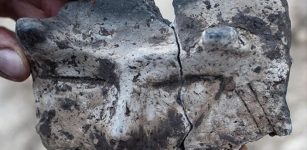 Unusual 7,000-Year-Old Jar Decorated With A Horned Face Found In Poland
Archaeology | Sep 3, 2020
Unusual 7,000-Year-Old Jar Decorated With A Horned Face Found In Poland
Archaeology | Sep 3, 2020 -
 Traces Of Viking Raids Remain Visible In Modern Russian Economy And Politics
Archaeology | Feb 9, 2022
Traces Of Viking Raids Remain Visible In Modern Russian Economy And Politics
Archaeology | Feb 9, 2022 -
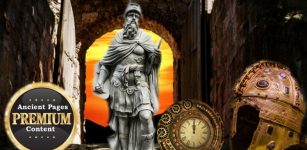 Unexplained Phenomenon In East Anglia – Ancient Mystery Deepens As More Unusual Sightings Are Reported – Part 2
Ancient Mysteries | Jun 1, 2018
Unexplained Phenomenon In East Anglia – Ancient Mystery Deepens As More Unusual Sightings Are Reported – Part 2
Ancient Mysteries | Jun 1, 2018 -
 Mysterious Engraved Bones Discovered On The Island Of Janitzio In Michoacán, Mexico
Archaeology | Jun 25, 2024
Mysterious Engraved Bones Discovered On The Island Of Janitzio In Michoacán, Mexico
Archaeology | Jun 25, 2024 -
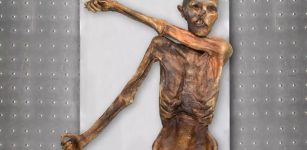 Ötzi Had Dark Skin, Bald Head And Anatolian Ancestry- DNA Reveals
Evolution | Aug 16, 2023
Ötzi Had Dark Skin, Bald Head And Anatolian Ancestry- DNA Reveals
Evolution | Aug 16, 2023 -
 Have Archaeologists Found Evidence Of A Universal Ancient Civilization That Gave Birth To All Other Cultures Across The World?
Featured Stories | Mar 13, 2025
Have Archaeologists Found Evidence Of A Universal Ancient Civilization That Gave Birth To All Other Cultures Across The World?
Featured Stories | Mar 13, 2025 -
 On This Day In History: Ceiling Of The Sistine Chapel, Painted By Michelangelo, Is Shown Publicly For The First Time – On Nov 1, 1512
News | Nov 1, 2016
On This Day In History: Ceiling Of The Sistine Chapel, Painted By Michelangelo, Is Shown Publicly For The First Time – On Nov 1, 1512
News | Nov 1, 2016 -
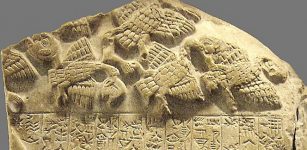 Sumerian Stele Of The Vultures: Oldest Known Historical Records Carved On Limestone
Featured Stories | Sep 1, 2016
Sumerian Stele Of The Vultures: Oldest Known Historical Records Carved On Limestone
Featured Stories | Sep 1, 2016 -
 Mysterious Disappearance Of King Aegeus Of Athens After His Wedding
Featured Stories | Aug 23, 2025
Mysterious Disappearance Of King Aegeus Of Athens After His Wedding
Featured Stories | Aug 23, 2025 -
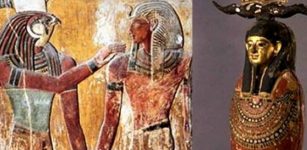 Sokar – Patron Deity Of Ancient Necropolis Of Memphis In Lower Egypt
Egyptian Mythology | Feb 19, 2019
Sokar – Patron Deity Of Ancient Necropolis Of Memphis In Lower Egypt
Egyptian Mythology | Feb 19, 2019 -
 The Battle Of Anghiari – Lost Painting Of Leonardo Da Vinci – One Of Art History’s Greatest Mysteries
Artifacts | Jan 24, 2018
The Battle Of Anghiari – Lost Painting Of Leonardo Da Vinci – One Of Art History’s Greatest Mysteries
Artifacts | Jan 24, 2018 -
 Rings Of Moray – Sophisticated Irrigation System In Sacred Valley Of The Incas, Peru
Ancient Technology | Sep 11, 2015
Rings Of Moray – Sophisticated Irrigation System In Sacred Valley Of The Incas, Peru
Ancient Technology | Sep 11, 2015 -
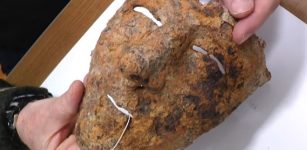 Extremely Rare Roman Cavalry Parade Mask Discovered In Romania
Archaeology | Feb 8, 2023
Extremely Rare Roman Cavalry Parade Mask Discovered In Romania
Archaeology | Feb 8, 2023 -
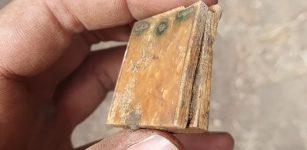 Extremely Rare And Tiny Medieval Sundial Discovered In Germany
Archaeology | Jul 31, 2023
Extremely Rare And Tiny Medieval Sundial Discovered In Germany
Archaeology | Jul 31, 2023 -
 Irrigation Works And Flood Protection Were Crucial For Defining The Golden Age Of Sumer
Archaeology | Aug 22, 2025
Irrigation Works And Flood Protection Were Crucial For Defining The Golden Age Of Sumer
Archaeology | Aug 22, 2025 -
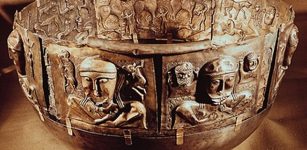 Gundestrup Cauldron: Great Gilded Silver Vessel Decorated With Scenes Derived From Celtic Mythology
Artifacts | May 30, 2016
Gundestrup Cauldron: Great Gilded Silver Vessel Decorated With Scenes Derived From Celtic Mythology
Artifacts | May 30, 2016 -
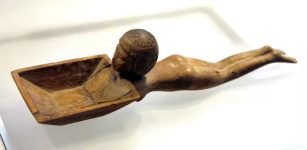 Intriguing And Suprising Ancient History Of Swimming That Started Over 100,000 Years Ago
Featured Stories | Dec 28, 2022
Intriguing And Suprising Ancient History Of Swimming That Started Over 100,000 Years Ago
Featured Stories | Dec 28, 2022 -
 3,000-Year-Old African Musical Instrument Can Help Modern Medicine
Archaeology | Sep 19, 2018
3,000-Year-Old African Musical Instrument Can Help Modern Medicine
Archaeology | Sep 19, 2018 -
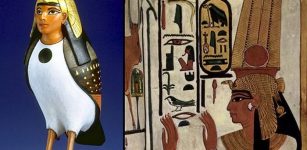 Why Were Ba And Ka Powerful Elements Of Soul In Ancient Egyptian Beliefs?
Egyptian Mythology | Apr 21, 2020
Why Were Ba And Ka Powerful Elements Of Soul In Ancient Egyptian Beliefs?
Egyptian Mythology | Apr 21, 2020 -
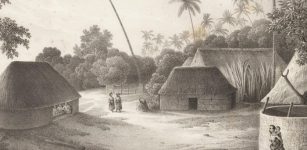 Impact Of European Contact With Pacific Islands Was Devastating – New Study Reveals
Archaeology | Sep 30, 2022
Impact Of European Contact With Pacific Islands Was Devastating – New Study Reveals
Archaeology | Sep 30, 2022


